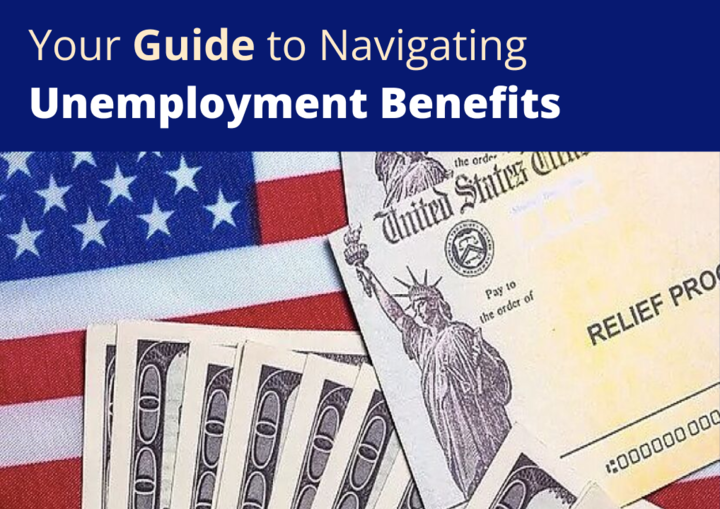Introduction: Navigating the Complex World of Health Insurance
Health insurance can feel like navigating a maze with its specialized terminology, complex policies, and numerous options. However, understanding your health insurance is crucial for making informed decisions about your healthcare and financial wellbeing. This comprehensive guide aims to demystify health insurance, breaking down complex concepts into understandable terms so you can confidently select the right coverage for your needs.
Whether you’re choosing insurance for the first time, changing plans during open enrollment, or trying to understand your current coverage better, this guide will walk you through everything you need to know about health insurance in the United States.
What is Health Insurance and Why is it Essential?
Health insurance is a contract between you and an insurance company where you pay regular premiums in exchange for the insurer covering a portion of your medical expenses. But it’s more than just a financial arrangement—it’s a critical safety net that protects you from potentially devastating medical costs.
The Primary Functions of Health Insurance:
- Financial Protection: Medical care in the United States can be extremely expensive. A single hospital stay can cost tens of thousands of dollars. Health insurance helps shield you from these high costs.
- Preventive Care Access: Most health insurance plans now cover preventive services at no additional cost, encouraging early detection and treatment of health issues before they become serious.
- Negotiated Rates: Insurance companies negotiate lower rates with healthcare providers, meaning you pay less for services than someone without insurance would
- Legal Compliance: Under the Affordable Care Act (ACA), while the individual mandate penalty has been reduced to $0 at the federal level, some states still require residents to have health insurance or pay a penalty.
The Real Cost of Being Uninsured:
- Astronomical Medical Bills: A three-day hospital stay can cost $30,000 or more, potentially leading to financial ruin or bankruptcy
- Delayed or Avoided Care: Uninsured individuals often postpone necessary care due to cost concerns, leading to more serious health conditions
- Limited Access to Services: Some providers require insurance or upfront payment before providing non-emergency care.
- Higher Out-of-Pocket Costs: Without insurance, you don't benefit from the negotiated rates that insurers have with healthcare providers.
Types of Health Insurance Plans
The health insurance landscape offers various plans, each with distinct features, networks, costs, and benefits. Understanding these differences is crucial for selecting a plan that aligns with your healthcare needs and financial situation.
Employer-Sponsored Health Insurance
Most Americans (approximately 49%) receive health insurance through their employer. These group plans typically offer:
- Lower Premiums: Employers often subsidize a significant portion of the premium cost.
- Pre-Tax Advantages: Premiums are usually paid with pre-tax dollars, reducing your taxable income.
- Simplified Enrollment: Your employer handles much of the administrative work
- Limited Choices: You're restricted to the plan(s) your employer offers.
Marketplace/Exchange Plans (ACA Plans)
These individual and family plans are available through federal or state marketplaces established by the Affordable Care Act:
- Income-Based Subsidies: Premium tax credits and cost-sharing reductions are available based on income.
- Guaranteed Coverage: Insurers cannot deny coverage based on pre-existing conditions.
- Essential Health Benefits: All plans must cover a set of essential health benefits including preventive care, emergency services, and maternity care.
- Metal Tiers: Plans are categorized as Bronze, Silver, Gold, or Platinum based on how costs are shared between you and the insurer
Medicare
A federal program primarily for individuals 65 or older and certain younger people with disabilities
- Medicare Part A: Hospital insurance covering inpatient care, skilled nursing facilities, hospice, and some home health care
- Medicare Part B: Medical insurance covering certain doctors' services, outpatient care, medical supplies, and preventive services
- Medicare Part C (Medicare Advantage): An alternative to Original Medicare (Parts A and B) offered by private companies approved by Medicare
- Medicare Part D: Prescription drug coverage.
Medicaid
A joint federal and state program that provides health coverage for some low-income people, families and children, pregnant women, the elderly, and people with disabilities:
- Income-Based Eligibility: Qualifications vary by state but are primarily based on income and family size.
- Comprehensive Coverage: Often includes benefits not typically covered by Medicare, including nursing home care and personal care services.
- Low or No Cost: Limited out-of-pocket costs for covered services
CHIP (Children's Health Insurance Program)
Provides low-cost health coverage to children in families that earn too much money to qualify for Medicaid but cannot afford private insurance
- Comprehensive Benefits: Covers routine check-ups, immunizations, doctor visits, prescriptions, dental and vision care, inpatient and outpatient hospital care, and more
- Low Cost: Varies by state, but significantly less expensive than private insurance
Short-Term Health Insurance
Temporary coverage designed to fill gaps between more comprehensive plans:
- Limited Duration: Typically available for periods from 1 month to just under a year (varies by state)
- Lower Premiums: Generally less expensive than ACA plans.
- Limited Coverage: May not cover pre-existing conditions, preventive care, or essential health benefits.
- Medical Underwriting: Can deny coverage based on health status.
Catastrophic Health Insurance
Available to people under 30 or those who qualify for a hardship exemption:
- High Deductibles: You pay most medical costs up front until the deductible is met.
- Emergency Protection: Primarily designed to protect against high medical costs from severe illness or injury.
- Preventive Coverage: Covers three primary care visits per year before the deductible is met, as well as preventive services.
Understanding Health Insurance Plan Networks
Your plan’s network significantly impacts which doctors you can see, what hospitals you can use, and how much you’ll pay for care.
Common Network Types:
Health Maintenance Organization (HMO)
- Primary Care Physician (PCP) Required: Must select a PCP who coordinates your care.
- Referrals Needed: Need referrals from your PCP to see specialists.
- No Out-of-Network Coverage: Except in emergencies, care is only covered when provided by in-network providers.
- Lower Premiums and Out-of-Pocket Costs: Generally less expensive than other plan types.
Preferred Provider Organization (PPO)
- No PCP Requirement: Can see any healthcare provider without a referral.
- Out-of-Network Coverage: Care from providers outside the network is covered, though at a higher cost.
- Larger Provider Network: Typically offers more provider choices.
- Higher Premiums: Usually more expensive than HMOs due to greater flexibility.
Exclusive Provider Organization (EPO)
- No PCP Requirement: Can see any in-network provider without a referral.
- No Out-of-Network Coverage: Similar to HMOs, care is only covered when provided by in network providers (except in emergencies)
- Balance of Cost and Flexibility: Often priced between HMOs and PPOs.
Point of Service (POS)
- PCP Required: Must select a PCP who coordinates your care.
- Out-of-Network Coverage: Can see out-of-network providers at a higher cost.
- Referrals Usually Needed: Typically need a referral to see specialists.
- Moderate Premiums: Usually priced between HMOs and PPOs.
Network Considerations:
When evaluating a plan’s network, consider:
- Your Current Providers: Are your preferred doctors, specialists, and hospitals in-network?
- Network Size and Accessibility: Are there sufficient providers in your geographic area?
- Specialist Access: How difficult is it to see specialists if needed?
- Travel Coverage: How does the plan handle care when you're away from home?
Key Health Insurance Terms and Concepts
Understanding the terminology is essential for making informed decisions about your health insurance.
Premium
The amount you pay for your health insurance every month, regardless of whether you use medical services.
Deductible
The amount you pay for covered healthcare services before your insurance plan starts to pay. For example, with a $2,000 deductible, you pay the first $2,000 of covered services yourself.
Copayment (Copay)
A fixed amount you pay for a covered healthcare service after you’ve paid your deductible. For example, you might pay $25 for a doctor visit or $15 for a prescription.
Coinsurance
Your share of the costs of a covered healthcare service, calculated as a percentage of the allowed amount for the service. For example, if the allowed amount for a service is $100 and you’ve met your deductible, you might pay 20% ($20) while the insurance pays 80% ($80).
Out-of-Pocket Maximum
The most you have to pay for covered services in a plan year. After you spend this amount on deductibles, copayments, and coinsurance, your health plan pays 100% of the costs of covered benefits.
Explanation of Benefits (EOB)
A statement from your health insurance company explaining what medical treatments and/or services were paid for on your behalf. It’s not a bill, but helps you understand how your benefits were applied.
Prior Authorization
Approval from a health plan that may be required before you get a service or fill a prescription in order for the service or prescription to be covered by your plan.
Formulary
A list of prescription drugs covered by a prescription drug plan or another insurance plan offering prescription drug benefits. Also called a drug list
Allowed Amount
The maximum amount a plan will pay for a covered healthcare service. If your provider charges more than the plan’s allowed amount, you may have to pay the difference.
How to Choose the Right Health Insurance Plan
Step 1: Assess Your Healthcare Needs
Consider your current and anticipated healthcare requirements:
- Medical History: Do you have chronic conditions requiring regular care?
- Medications: What prescription drugs do you take regularly?
- Planned Procedures: Are you anticipating any surgeries or major treatments?
- Family Planning: Are you planning to have children soon?
- Provider Relationships: Do you have established relationships with specific doctors?
Step 2: Evaluate Your Financial Situation
Understand your budget for healthcare:
- Monthly Budget: How much can you afford in monthly premiums?
- Savings: Do you have savings to cover potential out-of-pocket costs?
- Risk Tolerance: Are you comfortable with higher potential costs in exchange for lower premiums?
Step 3: Compare Plan Types and Features
Analyze different plan options based on:
- Total Cost Projection: Estimate your total annual costs (premium + likely out-of-pocket expenses)
- Network Compatibility: Check if your preferred providers are in-network.
- Drug Coverage: Verify that your medications are on the plan's formulary.
- Additional Benefits: Consider extras like telehealth, wellness programs, or alternative medicine coverage.
- Plan Ratings: Research quality ratings and customer satisfaction scores
Step 4: Use Available Tools and Resources
Take advantage of resources to help with your decision:
- Plan Comparison Tools: Use marketplace or insurer websites to compare plans side-by side.
- Cost Calculators: Estimate your costs under different scenarios.
- Insurance Brokers or Navigators: Seek professional guidance at no additional cost.
- Human Resources Department: If considering employer plans, consult with HR for clarification.
Sample Plan Comparison Matrix:
| Feature | Plan A (HMO) | Plan B (PPO) | Plan C (High-Deductible) |
|---|---|---|---|
| Monthly Premium | $350 | $500 | $200 |
| Annual Deductible | $1,000 | $500 | $3,000 |
| Primary Care Visit | $25 copay | $20 copay | 20% after deductible |
| Specialist Visit | $50 copay | $35 copay | 20% after deductible |
| Emergency Room | $250 copay | $150 copay | 20% after deductible |
| Prescription Drugs | $15 / $40 / $75 | $10 / $30 / $50 | 20% after deductible |
| Out-of-Pocket Max | $5,000 | $3,500 | $6,900 |
| Network Restrictions | High | Low | Medium |
| HSA Eligible | No | No | Yes |
| Best For | Moderate healthcare needs, values simplicity | Higher healthcare needs, values flexibility | Low healthcare needs, values savings |
Enrollment Periods and Special Circumstances
Health insurance enrollment is typically restricted to specific periods unless you experience qualifying life events.
Open Enrollment Periods
- Employer Plans: Usually held once a year, often in the fall. The specific timeframe is determined by your employer.
- Marketplace Plans: For 2025 coverage, the federal marketplace open enrollment runs from November 1, 2024, to January 15, 2025. Some state-based marketplaces may have different dates.
- Medicare: The Annual Enrollment Period runs from October 15 to December 7 each year, with coverage beginning January 1.
Special Enrollment Periods (SEPs)
Qualifying life events that typically trigger a SEP include:
- Loss of Health Coverage: Losing job-based coverage, aging off a parent's plan at 26, losing eligibility for Medicare, Medicaid, or CHIP
- Household Changes: Marriage, divorce, birth or adoption of a child, death of a family member on your plan
- Residence Changes: Moving to a new ZIP code or county, students moving to or from school, seasonal workers moving for work, moving to or from a shelter
- Other Qualifying Events: Income changes affecting coverage eligibility, gaining citizenship or lawful presence in the U.S., leaving incarceration
Making the Most of Your Health Insurance
Once you’ve selected and enrolled in a health insurance plan, take these steps to maximize your benefits
Preventive Care Utilization
Most health plans cover preventive services at no additional cost, including:
- Annual Check-ups: General physical examinations.
- Vaccinations: Including flu shots and other recommended immunizations.
- Screenings: Cancer screenings, blood pressure checks, cholesterol tests, etc.
- Women's Health: Well-woman visits, contraception, and pregnancy-related care.
Understanding Your Coverage Documents
Familiarize yourself with these important documents:
- Summary of Benefits and Coverage (SBC): Provides a standardized overview of what your plan covers and what it costs
- Evidence of Coverage (EOC): The detailed contract that explains all aspects of your coverage, including benefits, exclusions, and procedures.
- ID Card: Contains your policy number and contact information for your insurer, which you'll need when seeking care
In-Network Provider Verification
Before receiving care:
- Verify Network Status: Confirm that providers are in-network by checking your insurer's online directory or calling the provider directly
- Ask About Facility Fees: Some providers charge additional facility fees that may not be fully covered
- Check for Tiered Networks: Some plans have different cost levels even within their network
Prescription Drug Management
To save on medication costs:
- Formulary Checks: Review your plan's prescription drug list to see which medications are covered and at what tier/cost level
- Generic Alternatives: Ask your doctor if generic medications are appropriate for your condition
- Mail-Order Options: Many plans offer discounts for 90-day supplies through mail-order pharmacies
- Prescription Assistance Programs: Look into manufacturer discount cards or assistance programs for high-cost medications
Understanding EOBs and Medical Bills
When you receive medical services:
- Review EOBs Promptly: Compare them with provider bills to ensure accuracy.
- Question Discrepancies: If something doesn't look right, contact both your provider and insurer.
- Negotiate Bills: If you're facing high out-of-pocket costs, ask about payment plans or discounts.
- Appeal Denied Claims: You have the right to appeal if your insurer denies coverage for a service you believe should be covered
Special Considerations for Specific Situations
For Young Adults (18-26)
- Parent's Plan Option: You can stay on your parent's health insurance until age 26, regardless of whether you live with them, are financially dependent, are married, or are eligible for your own employer's coverage
- Student Health Plans: If you're in college, consider student health insurance plans, which often provide good coverage at reasonable rates.
- Catastrophic Plans: If under 30, you qualify for lower-premium catastrophic health plans, which provide protection from worst-case scenarios
For Families
- Family Deductibles: Understand how individual vs. family deductibles work in your plan.
- CHIP Eligibility: Check if your children qualify for CHIP even if you don't qualify for Medicaid.
- FSA for Dependents: Consider a Dependent Care FSA if you have childcare expenses.
- Pediatric Dental and Vision: These are essential health benefits for children under the ACA, but adult dental and vision coverage usually requires separate plans
For Older Adults (Near Medicare Age)
- Medicare Timing: Understand when and how to enroll in Medicare to avoid penalties.
- Medicare Supplement Options: Consider whether Medigap or Medicare Advantage better suits your needs
- Employer Coverage Coordination: If still working at 65+, determine how your employer coverage coordinates with Medicare.
- Prescription Drug Coverage: Ensure you have adequate prescription coverage either through Medicare Part D or a Medicare Advantage plan
For Self-Employed Individuals
- Marketplace Plans: Check if you qualify for premium subsidies based on your projected income.
- Health Insurance Premium Deduction: You may be able to deduct health insurance premiums on your taxes.
- Association Health Plans: Some professional or trade associations offer group health plans to members.
- Direct Primary Care with Catastrophic Coverage: Consider combining a direct primary care membership with a high-deductible plan for major expenses
Health Savings Accounts (HSAs) and Other Tax-Advantaged Options
Health Savings Account (HSA)
- Eligibility: Must be enrolled in a qualifying high-deductible health plan (HDHP).
- Triple Tax Advantage: Contributions are tax-deductible, growth is tax-free, and withdrawals for qualified medical expenses are tax-free
- Portability: You own the account regardless of employment changes.
- Investment Potential: Many HSAs allow you to invest funds, making them valuable long term savings vehicles.
- 2025 Contribution Limits: $4,150 for individual coverage, $8,300 for family coverage (plus $1,000 catch-up contribution if 55 or older).
Flexible Spending Account (FSA)
- Employer-Sponsored: Only available through employers.
- Use-It-or-Lose-It: Funds generally must be used within the plan year, though employers may offer a grace period or allow up to $610 to carry over
- 2025 Contribution Limit: $3,200 for healthcare FSAs.
- Immediate Availability: Full elected amount is available at the beginning of the plan year.
Health Reimbursement Arrangement (HRA)
- Employer-Funded: Funded solely by employers, not employees.
- Reimbursement Model: Employers reimburse employees for qualified medical expenses up to a set amount
- Varieties: Several types exist, including Individual Coverage HRAs (ICHRAs) and Qualified Small Employer HRAs (QSEHRAs)
- Tax Advantages: Reimbursements are tax-free for employees.
Dealing with Health Insurance Challenges
When Claims Are Denied
- Understand the Reason: Carefully read the explanation of denial in your EOB.
- Check for Errors: Verify that all information submitted was accurate.
- Contact Customer Service: Call your insurer to discuss the denial and options for resolution.
- Formal Appeals Process:
- Internal Appeal: Submit a formal request for your insurer to review the decision.
- External Review: If the internal appeal is unsuccessful, request an independent third party review
- Documentation: Keep detailed records of all communications regarding the appeal.
Managing Out-of-Network Costs
- Network Gap Exceptions: If no in-network provider is available for a specific service, request a network gap exception for coverage at in-network rates
- Balance Billing Protection: Check your state's surprise billing protections, or if applicable, the federal No Surprises Act protections.
- Negotiate Rates: Ask out-of-network providers if they'll accept your insurance's in-network rate.
- Payment Plans: If facing large bills, request an interest-free payment plan
Addressing Coverage Gaps
- Short-Term Plans: Consider short-term coverage for brief periods between comprehensive plans.
- COBRA: If leaving employer coverage, COBRA allows you to keep your plan (though at full cost) for up to 18 months
- Medicaid/CHIP: Check eligibility if your income decreases.
- Healthcare Sharing Ministries: While not insurance, these faith-based programs offer some financial protection for medical expenses.
Healthcare System Navigation Tips
Finding Quality Providers
- Research Credentials: Verify a provider's board certification and experience
- Check Ratings: Review provider ratings on your insurance portal or independent sites
- Ask for Recommendations: Consult with your primary care provider or trusted friends/family
- Consider Convenience: Location, hours, telehealth options, and patient portal capabilities can impact your care experience.
Preparing for Medical Appointments
- Bring Documentation: Insurance card, ID, medication list, and relevant medical records.
- Questions List: Prepare specific questions about your condition, treatment options, and costs.
- Health History Summary: Create a concise summary of your medical history for new providers.
- Appointment Notes: Take notes or record the session with permission
Understanding Treatment Costs Beforehand
- Cost Estimator Tools: Many insurers offer online tools to estimate costs for procedures.
- CPT Code Requests: Ask your provider for the CPT (procedure) codes, then check with your insurer for coverage details.
- Facility Fees: Ask if your provider charges separate facility fees in addition to service fees.
- Alternative Options: Discuss less expensive treatment alternatives if cost is a concern
Future Health Insurance Planning
Life Changes and Insurance Adjustments
- Career Changes: Job transitions might mean changing insurance plans.
- Family Planning: Pregnancy and childbirth require specific coverage considerations.
- Aging: As you approach 65, prepare for Medicare enrollment.
- Retirement: Understand retiree health benefits or alternatives if retiring before Medicare eligibility.
- Relocation: Moving may necessitate finding new in-network providers or even new insurance plans
Long-Term Care Considerations
Traditional health insurance and Medicare provide limited coverage for long-term care needs:
- Long-Term Care Insurance: Consider purchasing a policy in your 50s or early 60s before premiums become prohibitively expensive.
- Hybrid Policies: Some life insurance policies offer long-term care riders
- Medicaid Planning: Understand Medicaid's long-term care coverage and eligibility requirements if this might be relevant to your situation
Resources for Further Assistance
Government Resources
- Healthcare.gov: The federal health insurance marketplace website with plan comparison tools and enrollment capabilities.
- Medicare.gov: Official Medicare website with detailed information about Medicare options
- State Insurance Departments: Provide consumer assistance and regulate insurance companies operating in your state.
- SHIP (State Health Insurance Assistance Program): Offers free Medicare counseling services
Consumer Assistance Programs
- Patient Advocates: Many hospitals have patient advocates who can help navigate billing issues
- Healthcare Navigators: Trained individuals who help people shop for and enroll in plans through the marketplace
- Independent Insurance Brokers: Can provide personalized guidance on selecting appropriate coverage.
- Nonprofit Resources: Organizations like the Patient Advocate Foundation offer assistance with insurance appeals and medical debt issues
Health Insurance Literacy Tools
- Just Plain Clear Glossary: A comprehensive dictionary of health insurance terms.
- Healthcare Cost Estimator Tools: Available through many insurance companies to estimate out-of-pocket costs
- Plan Comparison Worksheets: Templates to systematically compare different health insurance options
Conclusion: Taking Control of Your Health Insurance
Health insurance is more than just a financial product—it’s a crucial tool for protecting your health and financial wellbeing. By understanding the fundamentals outlined in this guide, you’re better equipped to:
- Select coverage that aligns with your healthcare needs and financial situation
- Utilize your benefits effectively to maintain and improve your health
- Navigate challenges confidently when they arise
- Adapt your coverage as your life circumstances change
Remember that health insurance decisions are personal—what works best for someone else might not be optimal for you. Take the time to assess your specific situation, use available resources, and don’t hesitate to seek professional guidance when needed.
For more detailed information and state-specific guidance, visit OPG Guides’ comprehensive health insurance resource, which provides regularly updated information on health insurance options, eligibility requirements, and enrollment processes.







